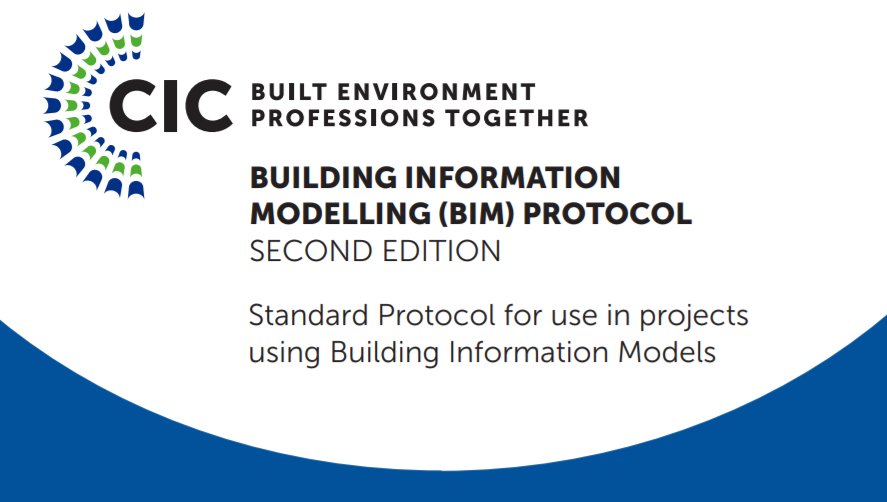The BIM (Building information model) protocol definition
The BIM (Building Information Modeling) Protocol is a standardized supplementary legal agreement used widely and mostly at BIM level 2 to amend existing construction contracts. However, under the influence of stronger digitalization, the protocol is supposed to progress to BIM level 3.

Drafted and developed by the UK’s Construction Industry Council, the CIC BIM Protocol highlights two main pillars: project collaboration and the rights and obligations of individuals or parties involved.
Why was the BIM Protocol developed by Construction industry council (CIC) in the UK?
The CIC BIM Protocol was developed in response to the UK Government’s BIM Strategy, which aimed to streamline the delivery of project and asset information, documentation, and data in electronic form by 2016. This strategy was implemented to promote efficiency and collaboration in public-sector projects.
Meeting BIM Level 2 requirements means creating a well-organized 3D space using different models and data from various fields disciplines.
To fulfil the “BIM mandate”, different legal and contractual aspects must be taken into account, as multiple stakeholders need to collaborate, sharing their individual assets and working collectively on integrated assets.
What are the changes in the Second Edition (2018)?
In 2018, the CIC BIM Protocol underwent significant updates to adapt to evolving industry trends. The second edition incorporates significant advancements in BIM standards and practices since 2013, developed through extensive consultation with industry experts and legal practitioners. The revised edition of the protocol now boosts flexibility, serving as a prioritized agreement in the event of a conflict between client or project team obligations. It aligns with PAS 1192-2 by focusing on information rather than design models, establishing clear specific information requirements from design to execution.
The updated protocol also defines model production responsibilities across different design phases, introduces a novel information coordination process, and outlines methods for resolving interferences.
Moreover, it stays current by incorporating changes in standards, programs, and the Common Data Environment (CDE).
Drafted and developed by the UK’s Construction Industry Council, the CIC BIM Protocol highlights two main pillars: project collaboration and the rights and obligations of individuals or parties involved.
Main objectives of the BIM Protocol
The first objective of promoting collaborative working is accomplished by making the role of Information manager mandatory, setting the use of Information Management standards as an explicit contractual requirement and enabling other common working practices as well during the early stages.
The information manager’s job is to make sure that the model is aligned with with the Protocol and the data is kept safe and secured. Their main focus is on the application of the BIM protocol as well as data management, and don’t have to handle coordination or clash detection.
As for the second objective, the protocol is required to be appended to working contracts of anyone associated with information and data exchange in the BIM projects (Building Information Modeling). By doing so, the protocol ensures the expected outputs and guarantees the same standards, conditions and ways of working among project team members.
It is important to mention that the BIM protocol is based on the direct contractual relationship with the employer and the supplier. Therefore, there are no additional rights or liabilities among different suppliers. The Protocol has been designed for the use of the employer and perhaps by consultants and contractors, who employ a version of the Protocol to monitor the work of sub-consultants and sub-contractors.
BIM Protocol Appendices
To make the standardized documents relevant to specific construction projects, the CIC BIM protocol provides two editable appendices
BIM protocol appendix 1
Model production and delivery table: This must include references to all Building Information Models that are required by the employer at each project stage.
BIM protocol appendix 2
Appendix 2 – Information requirements: This details the information management standards that will be adopted on a project.
Major principles for the use of the BIM Protocol in project collaboration
When applying the BIM protocol to specific projects, there are some major principles that every organization should keep in mind.
- All parties in charge of the production of BIM on behalf of the employer should have the protocol incorporated into their contract/appointment.
- The same version of the protocol and its appendices should be incorporated into each contract.
- The wording of the CIC BIM Protocol should not be amended.
- The protocol should detail all Building Information Models that are going to be produced by all parties contracted to the employer on the project.
- The appendices have to be completed with specific information for all projects.
- Any changes in the protocol and its appendices should be treated as variations to the contract, following suitable change control procedures.
Future of the CIC BIM Protocol
Can the Protocol be used not only in BIM Level 2 but also in BIM Level 3 and beyond?
Resolving the contractual and legal challenges linked to increased collaboration in BIM level 3 and beyond will likely be a time-consuming process. The existing CIC BIM Protocol may not adequately address these concerns, necessitating the development of new protocols.



